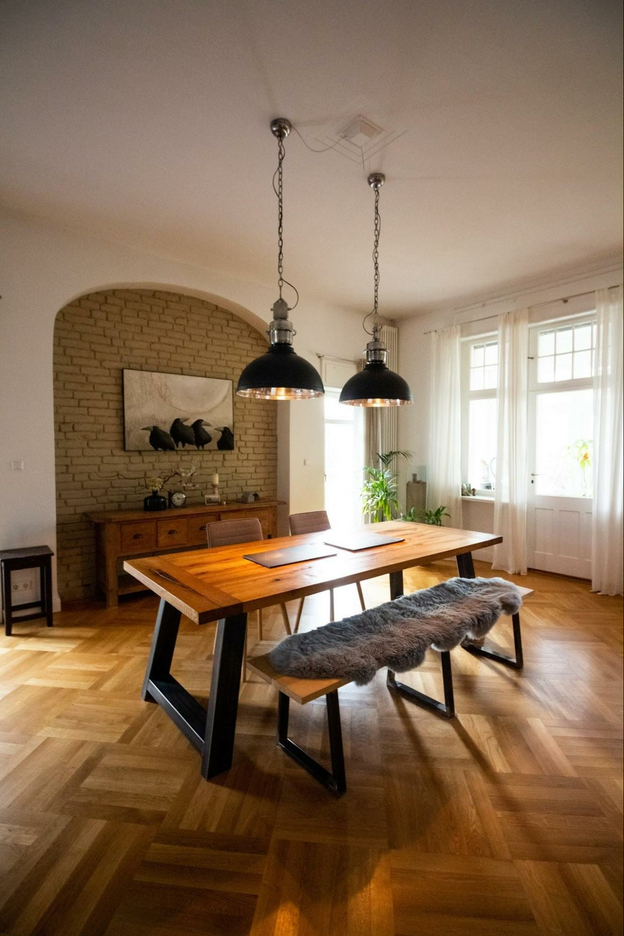
In a world where design trends evolve rapidly, it’s crucial to ensure that these trends do not inadvertently exclude specific individuals. Accessibility is a crucial consideration in modern home design, especially for those who rely on mobility aids. The challenge lies in creating spaces seamlessly integrating inclusive features while maintaining a stylish aesthetic.
Seamless Integration of Ramps and Elevators
One of the first aspects of inclusive design is the integration of ramps and elevators into the architectural blueprint of a home. Rather than relegating these features to an afterthought, architects are finding ways to incorporate them seamlessly. Ramps with sleek, modern designs that double as architectural elements can be integrated into indoor and outdoor spaces. Elevators are not just functional; they’re becoming statement pieces, showcasing style and accessibility.
Smart Home Technologies for Accessibility
The rise of smart home technologies opens up a world of possibilities for individuals using mobility aids. Technology is becoming integral to inclusive design, from voice-activated controls to automated door systems. Imagine a home where doors open with a simple voice command or lighting adjusts to accommodate various mobility needs. These advancements not only enhance accessibility but also bring a futuristic and sophisticated vibe to modern homes.
Adaptable Furniture for Living Spaces
Gone are the days when adaptive furniture screamed “medical.” Today, designers focus on creating pieces that seamlessly blend into the overall aesthetic of a living space while providing necessary functionality. Consider living room furniture that accommodates mobility equipment without compromising style – perhaps coffee tables with built-in charging stations or sofas with adjustable heights. Adaptable furniture ensures everyone can enjoy a comfortable and aesthetically pleasing living space regardless of mobility challenges. This type of furniture not only addresses practical considerations but also adds an element of creativity and personalisation. In an era where flexibility is highly valued, adaptable furniture contributes to a more dynamic and efficient use of home environments.
The Art of Accessible Kitchens
Kitchens are often the heart of a home, and their design should reflect inclusivity. Modern kitchen design trends are steering towards accessible solutions, such as adjustable countertops, pull-down shelves, and user-friendly appliances—various mobility aids. Sleek and minimalist aesthetics continue to dominate, focusing on clean lines, uncluttered surfaces, and integrated storage solutions. High-tech appliances with intelligent features have gained popularity, providing convenience and efficiency in the kitchen. Sustainable and eco-friendly materials are increasingly incorporated into modern kitchen designs, aligning with a growing awareness of environmental responsibility. Open-concept layouts remain in vogue, promoting seamless transitions between the kitchen and other living spaces. Neutral colour palettes, often featuring whites, greys, and natural tones, create a timeless and versatile backdrop for modern kitchens. However, bold accents and pops of colour are making a comeback, injecting personality and vibrancy into these spaces.
Regarding materials, quartz countertops have surged in popularity due to their durability and low maintenance. Matte finishes for cabinetry and appliances contribute to a sophisticated and contemporary look. Integrating smart home technology, such as touchless faucets and voice-activated controls, further enhances the modern kitchen’s functionality and efficiency.
Bathrooms Redefined for Comfort and Style
Bathroom design is undergoing a transformation to accommodate individuals who rely on mobility aids. Some examples of inclusive design solutions are walk-in showers with zero-threshold entries, grab bars that double as towel racks, and toilets with adjustable heights. Bathrooms are being redefined as spaces that prioritise comfort and style, ensuring that they cater to the diverse needs of all residents.
Technological advancements have also played a role in redefining bathroom comfort. Smart features, including programmable showers, heated floors, and intelligent mirrors with built-in lighting, enhance functionality and luxury. These innovations elevate the bathroom experience, providing convenience and sophistication.
Freestanding tubs have become a focal point, offering luxury and a spa-like feel. Open-concept shower designs with frameless glass enclosures contribute to the spaciousness, while luxurious rain showerheads and high-tech water controls add a touch of extravagance.
Storage solutions have evolved to maximise space efficiency without compromising style. Floating vanities and wall-mounted cabinets create a streamlined look, contributing to an overall sense of openness and modernity.
Multi-Functional Outdoor Spaces
Outdoor spaces should be an extension of the home’s inclusivity. Inclusive design for gardens and patios involves creating paths that accommodate things like mobility scooters, selecting furniture that is both comfortable and accessible, and incorporating sensory elements that appeal to all residents. Imagine a garden where everyone can enjoy serenity, regardless of mobility challenges. Inclusive outdoor spaces are a testament to a home’s commitment to accessibility without compromising on elegance. The key is to design flexibly, allowing the outdoor space to adapt to its user’s changing needs and preferences.
you can find more content on accessible features on our sister website: The Accessible Property Register




 POSTED BY
POSTED BY 

